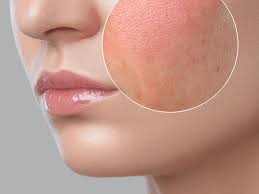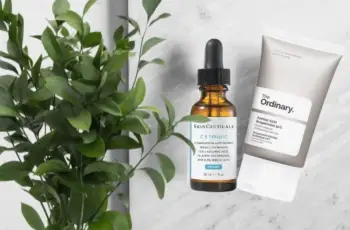
Is My Skin Dry or Dehydrated? Understanding the Difference and How to Treat It
It’s incredibly common to confuse dry skin with dehydrated skin, and even the most dedicated skincare lovers have been guilty of mixing the two up more than once.
At first glance, the symptoms can seem very similar — tightness, flakiness, dullness — but these issues actually stem from completely different causes and need different solutions.
So, what exactly makes dry skin different from dehydrated skin? Are we supposed to treat them differently, or can one routine work for both?
The truth is, although they might look alike on the surface, the key to fixing them lies in understanding how they develop and what your skin truly needs.
In today’s post, we’re diving into the core differences between dry and dehydrated skin, so you can finally stop guessing and start treating your skin the right way.
Let’s jump right into it and uncover how to identify your skin’s condition and how to restore its healthy, radiant glow with confidence and clarity.
What’s the Difference Between Dry Skin and Dehydrated Skin?
To answer that, it helps to take a quick look at how the skin works and what it needs to function properly on a daily basis, especially under stress from the environment.
The skin’s outermost layer, often referred to as the epidermis, plays a crucial role in protecting your body — but only when it maintains the right balance of oil and water.
Both oil (also called sebum) and water occur naturally on your skin and are essential for keeping your skin soft, smooth, and able to defend itself against irritants.
When this delicate balance is thrown off — either through environmental damage, overuse of certain products, or internal factors — skin becomes dry or dehydrated.
Common causes for this imbalance include cold weather, hot showers, indoor heating, pollution, poor diet, and even using the wrong skincare ingredients or routines.
Once the skin loses too much oil or water, you’ll notice your complexion looks tired, flaky, irritated, or inflamed — and sometimes all at once, adding to the confusion.
Dry Skin: What It Is and How to Recognize It
Dry skin is considered a skin type, meaning it’s largely based on genetics and your body’s natural ability to produce oil from its sebaceous glands.
If your skin type is dry, you naturally have fewer oil-producing glands, which means your skin struggles to stay soft and moisturized without extra support.
People with dry skin often feel tightness, especially after cleansing, and that uncomfortable sensation can begin within just 20 to 30 minutes after washing.
Other signs of dry skin include rough texture, visible flakes, ashiness, and a greater tendency to develop fine lines, especially in cooler weather.
Dry skin tends to worsen as we age since oil production decreases over time, making mature skin more prone to dryness, sagging, and overall dullness.
While dry skin can be managed with the right products, it’s a long-term skin type that doesn’t usually go away entirely — but it can absolutely be supported effectively.
Dehydrated Skin: How It’s Different and Why It Happens
Dehydrated skin, unlike dry skin, is a skin condition — not a skin type — which means that anyone, even those with oily or combination skin, can experience it.
This condition occurs when your skin lacks water, not oil, and it often results from external stressors like harsh climates, sun exposure, or an unbalanced diet.
Dehydrated skin looks dull, feels tight, and may show temporary fine lines or a slightly crinkled texture when you pinch or press the surface gently with your fingers.
Unlike dry skin, dehydrated skin may also show signs of congestion, inflammation, and an uneven tone, due to the skin’s impaired barrier and lack of moisture retention.
To determine if your skin is dehydrated, try the cheek test: press gently upward on your cheek and see if fine lines appear — that’s a key indicator of dehydration.
Because dehydration can occur in any skin type, even those with oily, acne-prone, or combination skin need to watch for signs of moisture loss regularly.
Key Differences at a Glance
Dry skin lacks oil, while dehydrated skin lacks water.
Dry skin is a permanent skin type, while dehydration is a temporary condition.
Dry skin often feels rough and tight; dehydrated skin feels tight but can also look oily.
Dehydrated skin often appears dull, congested, or inflamed; dry skin shows more flakiness.
How to Treat Dry and Dehydrated Skin Properly
Now that you can identify the difference between dry and dehydrated skin, the next step is learning how to treat both effectively with the right habits and ingredients.
Though the causes differ, treatment for both conditions begins with a commitment to consistency, quality ingredients, and paying attention to your environment.
1. Exfoliate Regularly, But Gently
Both dry and dehydrated skin can benefit from exfoliation to remove dead skin cells that block absorption of moisturizers and hydrating serums underneath.
Use chemical exfoliants like AHAs (glycolic or lactic acid) if your skin tolerates them, or opt for a gentle physical scrub no more than once or twice a week.
Over-exfoliation can worsen both dryness and dehydration, so find a rhythm that works for you and always follow up with nourishing, hydrating products afterward.
2. Hydrating Serums Are Your Best Friend
Look for serums with humectants — ingredients that pull water into the skin — such as hyaluronic acid, glycerin, panthenol, and niacinamide for long-lasting hydration.
Hyaluronic acid is especially effective because it can hold up to 1,000 times its weight in water, making it ideal for restoring hydration in any skin type.
Niacinamide helps strengthen the skin barrier, reduce inflammation, and even out the skin tone, making it a perfect multitasker for dehydrated complexions.
3. Adapt to Seasonal Changes Smartly
Your skin’s needs change throughout the year, and both dry and dehydrated skin will worsen when the air is cold, dry, or heated artificially during the winter.
In colder months, switch to richer moisturizers with ceramides, shea butter, or squalane to reinforce the skin barrier and prevent water from escaping the surface.
In the summer, hydration is still key — but you might prefer lighter, gel-based products that lock in water without feeling heavy, especially if you sweat more.
4. Try Steaming and Humidifiers for Extra Hydration
Facial steaming has become a trendy but effective way to open pores, hydrate deeply, and prep the skin for better absorption of serums and moisturizers afterward.
Adding a humidifier to your bedroom or workspace can significantly help restore moisture in the air, which keeps your skin from drying out overnight or during work.
This is especially helpful in winter or dry climates, where low humidity levels quickly rob your skin of its essential hydration without you even noticing it.
5. Build and Stick to a Consistent Skincare Routine
Long-term results come from consistency, not random product swaps — so once you find what works, stick with it and adjust slowly based on your skin’s reactions.
A complete routine for dry or dehydrated skin should include a gentle cleanser, hydrating serum, nourishing moisturizer, and regular exfoliation as discussed earlier.
You may also add facial oils or occlusives like petrolatum or lanolin in your evening routine to help lock in moisture and protect your skin overnight.
Why Is My Skin Still Dry Even When I Moisturize and Drink Water?
You might be doing all the right things — drinking water, applying moisturizer — and still feel like your skin is parched and undernourished no matter what.
That’s because drinking water, while essential for overall health, doesn’t directly hydrate your skin in the way you might hope or expect it to.
Your body prioritizes your vital organs first — heart, lungs, kidneys — so your skin only receives hydration when everything else has been taken care of.
This is why topical hydration through quality skincare is absolutely necessary — it delivers moisture directly to the skin, exactly where it’s needed most.
If your skin is still dry after moisturizing, it may be that you’re missing the right combination of hydrating serums, barrier-repair creams, or occlusive ingredients.
Remember: consistency, layering, and patience are the golden trio for improving skin that’s dry, dehydrated, or both — give your products time to show results.
Final Thoughts: Trust the Process and Know Your Skin
Understanding your skin is the first step to taking care of it properly, and the difference between dry and dehydrated skin is a game-changer in your routine.
With the right knowledge, the best ingredients, and smart habits, you can support your skin’s needs, protect its barrier, and keep it glowing year-round.
If you’re still unsure where to begin, try adjusting one element at a time — your cleanser, serum, or moisturizer — and observe how your skin responds.
We hope today’s guide cleared up the confusion about dry vs. dehydrated skin and left you feeling more empowered to give your skin exactly what it needs.
Don’t forget to join the conversation with us on Instagram and share your own tips, questions, or skincare victories — we’d love to hear from you!


